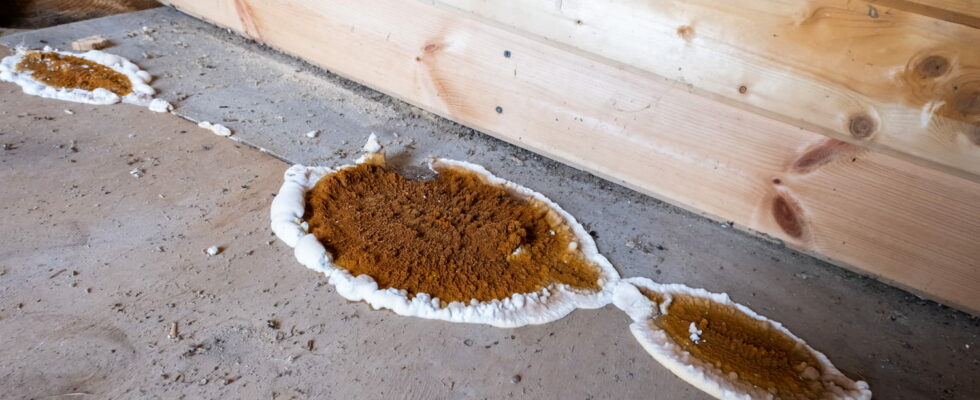If you live in a town affected by this fungus, be careful. It can attack the woodwork and weaken your home.
Dry rot, nicknamed “household leprosy”, is a silent but devastating scourge. This wood-eating fungus, which feeds on wood and cellulose-containing materials, proliferates in conditions of humidity and darkness. Its presence now threatens nearly 2,300 French municipalities, particularly in humid regions, causing considerable damage to housing.
Dry rot mainly attacks wooden structures: beams, floors, partitions. In his article published on November 20, 60 million consumers explains that dry rot can “in a few months weaken a house or building by eating away at the floors and the frame. An attacked beam can easily be broken by hand.” When it takes hold, it causes rapid degradation of materials, weakening buildings to the point of making them uninhabitable. In addition to these material consequences, dry rot can also cause health problems, in particular because of the spores it releases, which can cause respiratory problems.
This fungus proliferates in confined environments where humidity exceeds 20% and where the temperature fluctuates between 20 and 26°C. But it is not uncommon to see very active dry rot in cellars where the temperature does not exceed 15 degrees. Cellars, attics, poorly ventilated or poorly insulated houses are ideal areas for its development. Water infiltration, roof leaks or rising capillaries favor its appearance.

In France, mountainous regions, but also the most humid regions such as Normandy, Brittany, the North, but also Ile-de-France are particularly affected. “In Finistère and Côtes d’Armor, for example, nearly 50% of municipalities are affected,” alerts 60 million consumers.
The financial consequences linked to dry rot are serious. Once established, its eradication is complex and often requires expensive work: replacement of infected structures, treatment of walls, or even partial demolition of the building. Some insurance policies even exclude dry rot from traditional guarantees, leaving owners facing hefty bills.
Prevention is the key to avoiding this scourge. Regular maintenance of homes, effective ventilation and treatment of humidity problems are essential. If signs of infestation appear (presence of white filaments or brown spots, smell of fungus), it is imperative to call an expert to confirm the diagnosis and plan the necessary work.
Faced with the scale of the problem, certain municipalities are putting in place measures to inform residents and provide them with support. In addition, “the discovery of dry rot, anywhere in the territory, must be declared to the town hall” informs 60 million consumers. These reports and reports help to effectively combat this parasite.
